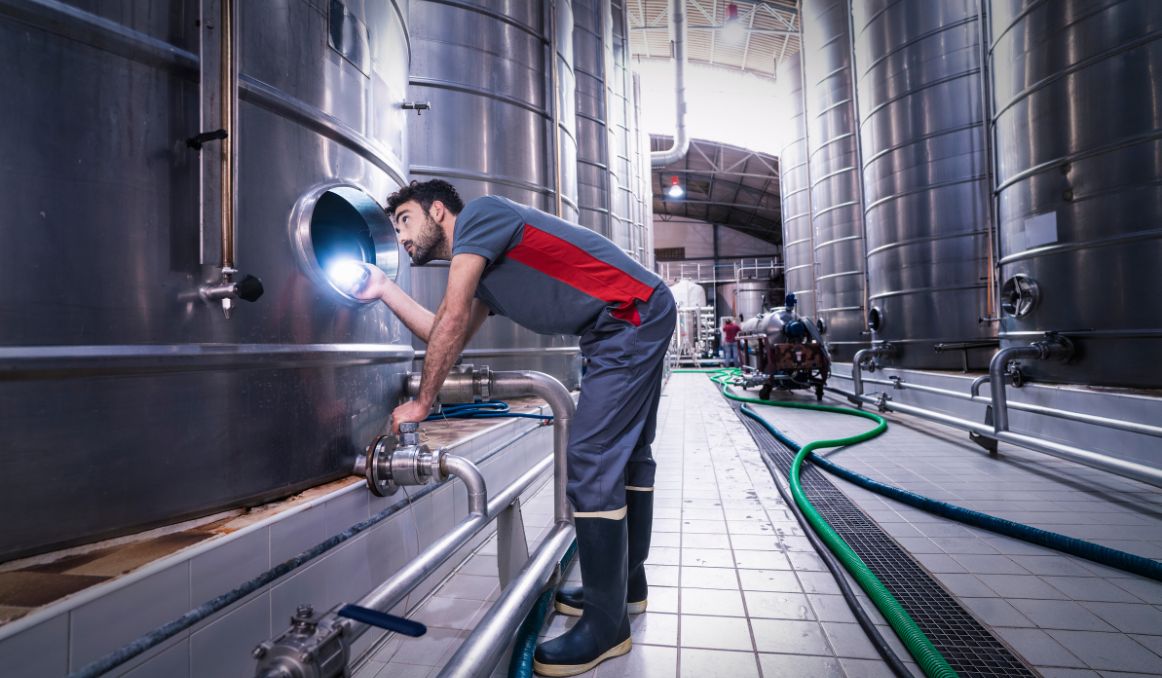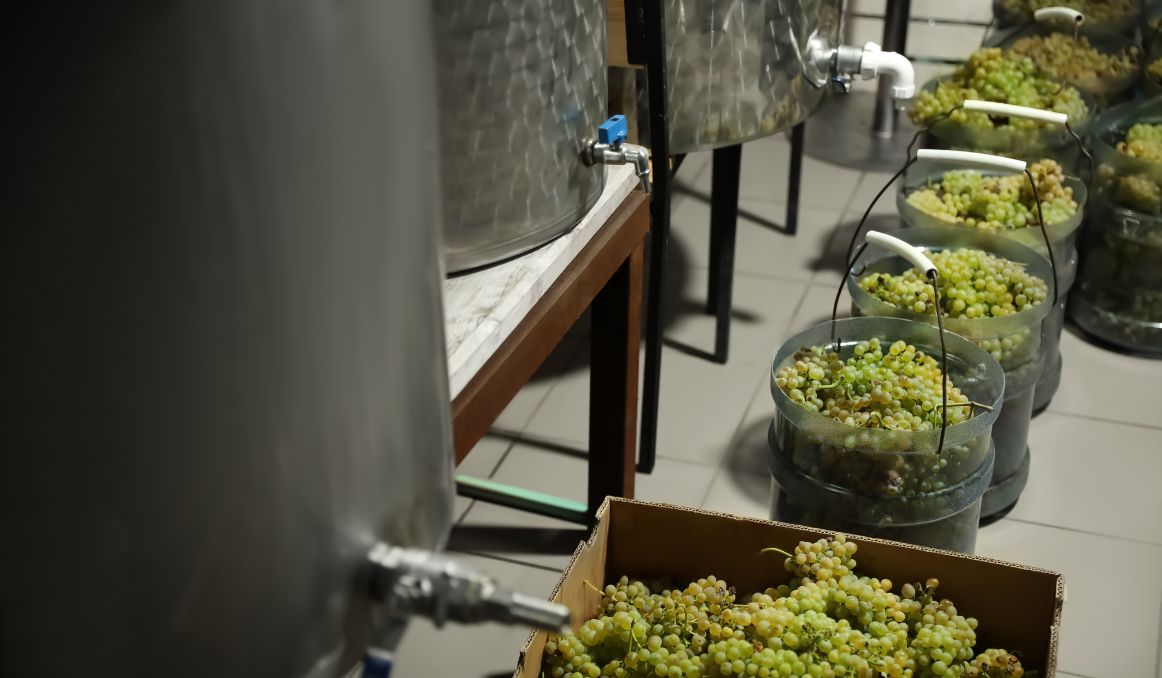Too Much Headspace in Secondary Fermenter: Wine Woes
The biggest concern with having too much headspace in the secondary fermenter with wine, or any other fermented beverage really, is oxidation. Oxidation has long been a bad word when it comes to wine, but fortunately, not only are there complexities that allow for some wiggle room, but there are also a few solutions when you find yourself in a tight, or rather not tight enough, spot.

The Wine Making Process
Oxidation really just refers to exposure to oxygen, and when it comes to wine, sometimes that’s a good thing, and sometimes it’s a bad thing.
Of course, your grapes are going to be exposed to oxygen during the pressing process. As soon as the grape skin is pierced your grape juice is exposed to oxygen.
And if you think about it, the wine making process has always allowed for plenty of oxygen.
Once upon a time, wine makers would simply press the grapes and store the liquid in a cask or barrel that certainly allowed for oxygen exposure. The wine fermented on its own and turned out just fine.
The problem today is that the process has become so complicated.
We want to preserve wine perfectly at a certain color, flavor, and aroma threshold; we want to bottle it and have it last for weeks, months, or even years.
Further, we have found that yeast performs differently in the absence of oxygen than it does with oxygen exposure. It will produce more alcohol when under the stress of having no oxygen. For those of us seeking high ABV in our fermented beverages, that’s a good thing.
So we typically ferment in the absence of oxygen.
Interestingly, wine kind of protects itself as it ferments. A thin layer of CO2 will form on the surface of the wine as it ferments as a natural byproduct of the fermentation process, which loosely protects the wine from too much oxygen exposure.
Thus, the concern with oxidation is not a huge one during primary fermentation.
Wine will ferment with or without oxygen.
It is secondary fermentation that raises some red flags.
Secondary Fermentation
During secondary fermentation, regardless of how you do it, with or without additives or fortification, you now have little to no yeast to produce that protective CO2.
Further, the goal of secondary fermentation is to clean up any and all messes left behind by primary fermentation. This phase, referred to as “mopping up” gets rid of off flavors and aromas unwanted by the average, selective wine drinker.
During primary fermentation, then, headspace is not an issue as oxygen is not an issue. Often, however, wine makers will transfer the wine to a secondary fermentation vessel for secondary fermentation and find they have more headspace in this secondary vessel, allowing for more oxygen, which could lead to oxidation.
Is Secondary Fermentation in another Vessel Absolutely Necessary?
Now, before you go thinking it might be easier to simply leave the wine in the same vessel for secondary fermentation or to avoid secondary fermentation altogether and thereby avoid unwanted oxidation, yes, secondary fermentation into a secondary vessel is necessary.
First, this is quite often the stage where you will get rid of pulp, skin, and any other solid debris that has been allowed to linger in the primary fermentation vessel.
Second, you need to both clear out the majority of your yeast so primary fermentation does indeed come to a halt, and you need to allow whatever live yeast cells leftover to consume any remaining dead yeast cells in your wine. It is how you get rid of those off flavors referred to above.
You can only get this process to kick in properly by racking your wine to a secondary vessel.
And you want to be sure that once you do rack to that secondary vessel, your wine does not have too much headspace, which will allow for too much oxygen.
The Science of Oxidation and Headspace

Now, of course there is a science to oxidation in wine. Many wine makers allow bits of oxygen to enter their wine during secondary and even a tertiary fermentation process that rids wine of vegetal characteristics. These characteristics can leave wine tasting like roasted bell pepper. Oxidation can also allow for an increase in color stability.
But, again, there is a science to it, and it is often called micro-oxygenation. And you want to have control over it.
What you don’t want is to simply leave your wine to its own devices with a ton of headspace in your vessel, in which case you will likely end up with prune juice tasting wine, or, worse, vinegar.
Your best bet is to keep a headspace of about 20% of the total volume of the vessel clear at the top, and no more. In a large jug, this typically means about 2 to 3 inches of space between the bottom of the stopper and the top of the wine.
Then, if you do decide to micro-oxygenate your wine, or at least experiment with the process, you can do so at your own leisure.
Solutions
What do you do if you have too much headspace?
You have a few options.
Add Water
If you only have a very little bit of space to fill, you can add a bit of water to your vessel to fill the headspace. Any more than a bit and you will end up with watered down wine. No one wants that.
Add a Similar Wine
You can also add a bit of a similar wine from a bottle to fill the space. Be sure you don’t go adding something either way too expensive or super cheap; the expensive stuff will just absorb into your existing fermenting wine and the cheap stuff will be leftover for you to drink. No one wants that either.
Add Glass Marbles
Finally, you can add sanitized glass marbles to your vessel to displace the liquid enough to rise closer to the top.
Whichever method you choose will surely be a learning experience, and you will know if this particular method works well for you, or not.
Just remember that wine making is all about experimenting and enjoying the process along the way.
Cheers!
Passionate about the wine and/or beer making process? So are we! If you’re interested in finding out how you can use our technology to control fermentation and monitor your yeast, save work hours and improve the cost-efficiency of your business, drop us a line at [email protected] or check out our product pages:
- Oculyze FW (Fermentation Wine) Yeast Cell Counter App + Hardware
- Oculyze BB 2.0 (Better Brewing) Yeast Cell Counter App + Hardware
Also, you can now get access to a fully functional demo account to test your yeast via our Web App. Completely free of charge and with no commitment to purchase.
Sources:


